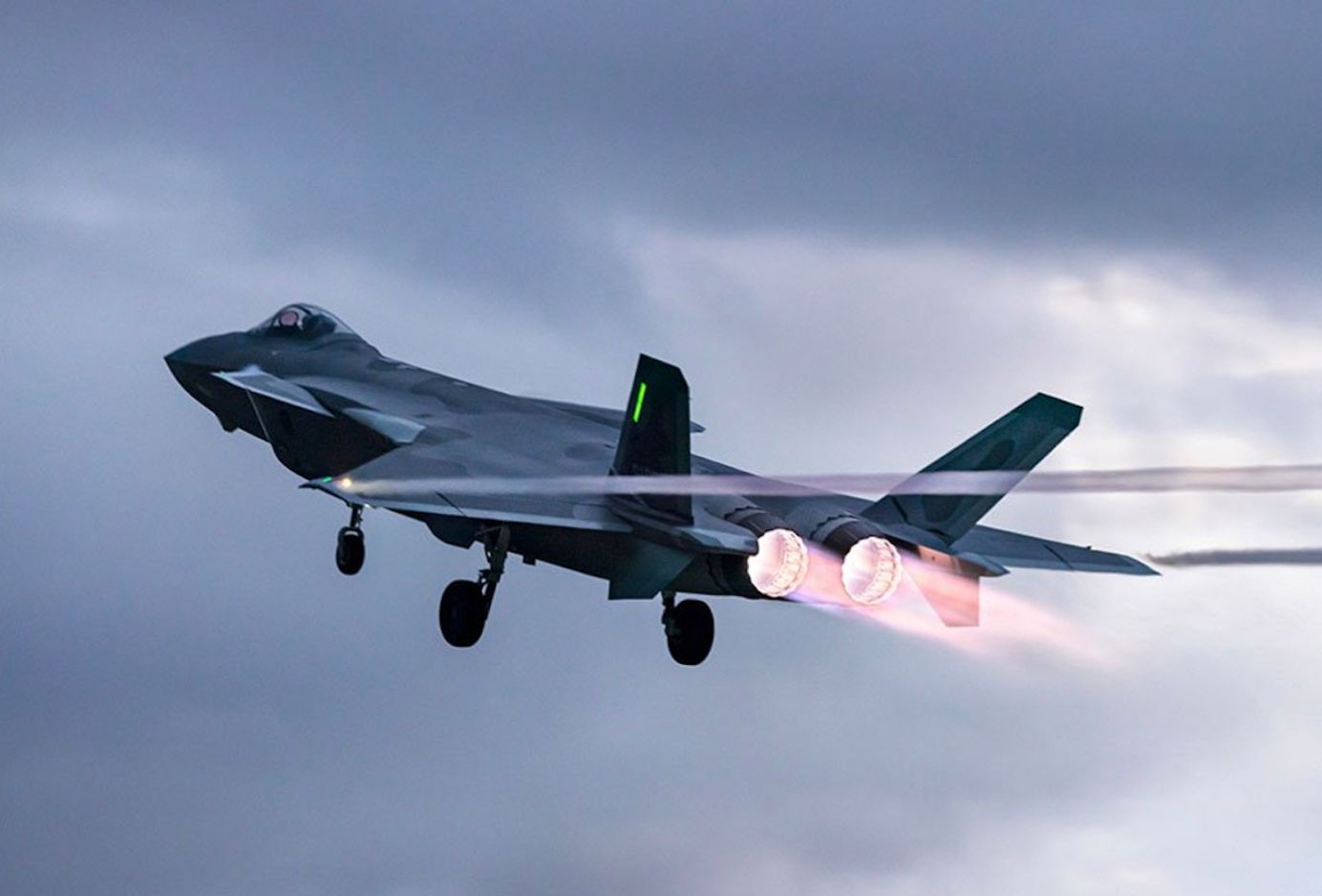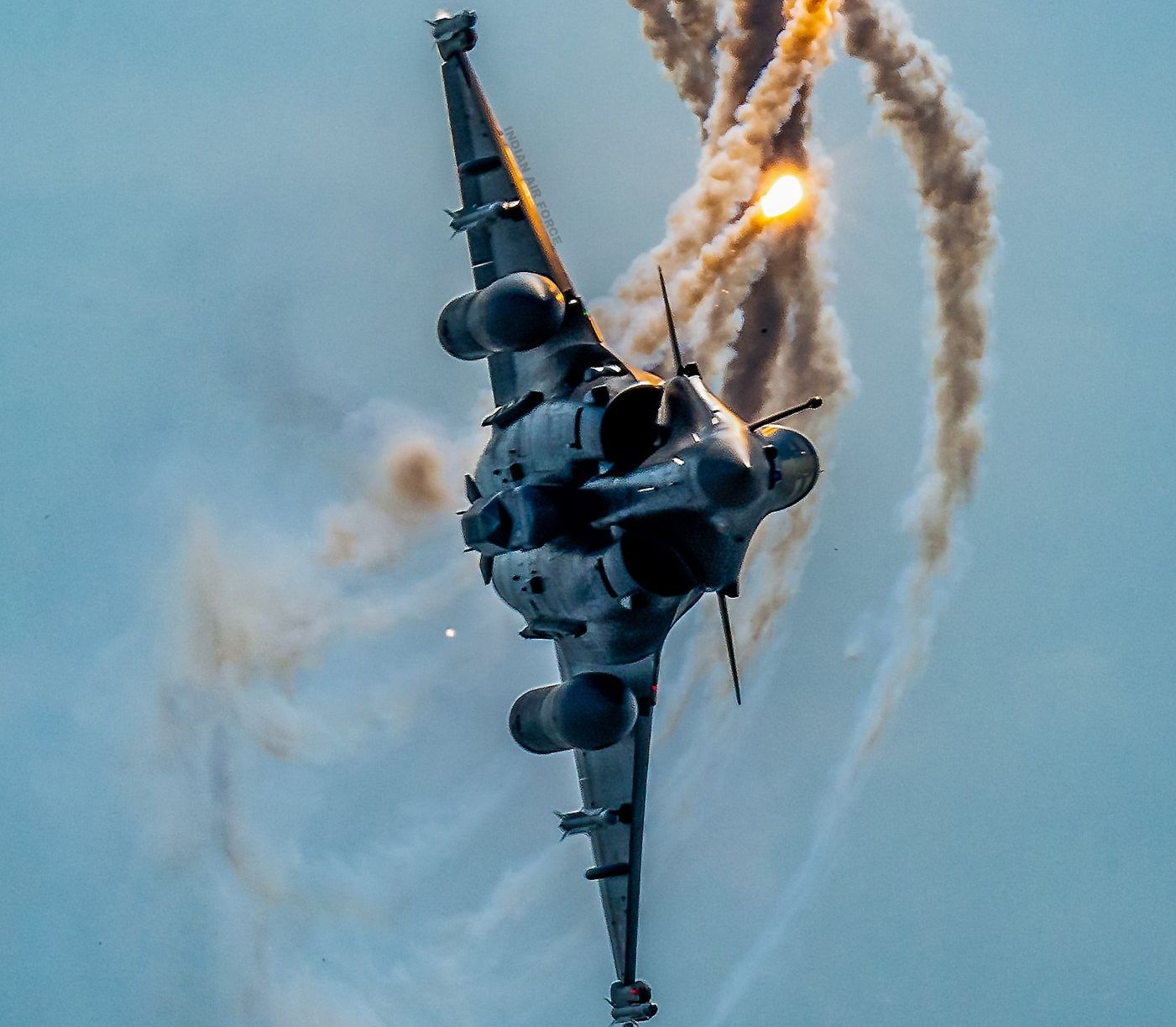To use a cliche, comparing the J-20 and the Rafale is like comparing oranges and apples. The two fighters were conceived and developed for entirely different roles.
However, the adversarial deployment of the two fighters in the context of the simmering India-China border dispute has fanned nationalist fervor and clamor for comparison to such an extent that comparing oranges and apples seems perfectly logical.
Also, the Global Times, piqued by the claim of the former COAS that the Rafale is superior to the J-20, has, without presenting a shred of evidence, fired a broadside trashing the Rafale as a generation behind the J-20 and claimed that the Rafale will “find it very difficult to confront a stealth-capable” J-20.
It’s time for fools to rush in where angels fear to tread. I may be a fool, but not a very verbose one, so I will confine this comparison to the BVR combat capability of the two fighters because no one in their senses, not even the Global Times, will contend that the J-20 is superior to Rafale in WVR combat.
BVR combat capability largely depends on the extent and capability of AWACS cover, RF signature, sensor suite, self-defense suite, Man Machine Interface (MMI), and air-to-air missile range. For the comparison, we will assume a Rafale armed with Meteor and a J-20 armed with PL-15. Both feature dual pulse propulsion (Second-stage ramjet in Meteor & a solid fuel rocket sustainer in PL-15) for thrust end-game maneuvering, a max range of over 150 km, and an active seeker.
RF Signature
The J-20, which features full extent frontal aspect and limited extent side aspect LO shaping, has a significantly lower radar signature than the Rafale, which only features limited extent frontal aspect LO shaping. Both aircraft use RAM (Radar Absorption Material) and possibly some classified features to further reduce their RF signature. Regarding the RF signature, it’s undoubtedly advantageous to J-20!
Sensor Suite
Both aircraft feature AESA radar, Optical Detection and Tracking system, and 360-deg FOV IR sensor-based situational awareness.
AESA
The J-20 likely has a more powerful radar. Some estimates put the number of T/R modules on the J-20’s AESA at 2000–2200. In comparison, the Rafale’s RBE2 AESA features 1000 T/R modules. Assuming that the Chinese T/R modules match the efficiencies of the GaAs (Gallium Arsenide) T/R modules on the RBE2, and Chinese software algorithms driving the T/R modules on the J-20 AESA match the sophistication of the algorithms controlling the RBE2 T/R modules, the J-20 would have a much better max detection range and a more formidable EW capability. However, the two assumptions that we have made aren’t trivial and are easily questionable by skeptics.
A better max detection range combined with the PL-15 air-to-air missile capable of leveraging the better range would give the J-20 a first-to-shoot advantage over the Rafale in BVR engagements.
However, the lack of sophistication of LPI (Low Probability of Intercept) features employed in the J-20’s AESA radar could negate the more extended detection range advantage. Once switched on, the higher radiating power of the J-20 AESA would be like a more powerful searchlight in a dark tunnel. It would see longer, but it would also be seen for longer. The Radar would be picked up by the RF sensors on the Rafale, completely negating the RF low observability of the J-20.

AESA radars leverage their control over individual T/R modules to scan and track while rapidly hopping frequencies over a broad spectrum. This makes it difficult for RF sensors on adversary aircraft to track the radar. Hence the term LPI. The question here is – how good is the LPI capability of the J-20 AESA? If it’s not good enough against Rafale sensors, the more extended range of the J-20 could become a liability that is best avoided by keeping the radar switched off!
The J-20 has the advantage of its AESA. However, we cannot be definite.
AWACS Cover
Data linked with and under the control of an AWACS, the J-20 would pose a formidable challenge to all IAF fighters, including Rafale. With the AWACS providing situational awareness and target tracking information, there would be no need for the J-20 to switch on its powerful AESA radar and risk revealing its position. The J-20 can likely relay tracking information obtained from the AWACS, providing cover, to the PL-15 missile until it picks up the target on its own little AESA.
Since the J-20 has good RF stealth, IAF AWACS could not obtain a weapon-grade track to take advantage of the Rafale.
Under AWACS cover, it would be advantage ++ for the J-20
Optical Detection & Tracking
The J-20 features an EOTS-86 electro-optical targeting system and an Electro-Optical Distributed Aperture System developed by Beijing A-Star Science and Technology. The EOTS-89 reportedly resembles the EOTS of the Lockheed Martin F-35. It combines Forward Looking Infrared (FLIR) and Infrared Search and Track (IRST) capabilities.
The Rafale’s optical detection and tracking system, referred to as OSF-IT, facilitates passive long-distance detection and target identification before engagement. Located ahead of the cockpit on the dorsal section of the front fuselage, it comprises two sensors – the central IR detector that serves as FLIR with up to 100-km range on the left and TV/IR sensor/Laser ranger on the right, which facilitates optical identification of targets upto 40 km away. Visual identification is considered imperative to rule out friendly fire fratricide.
One of the India Specific Enhancements (ISEs) sought by the IAF on the Rafale is an IRST, an indication perhaps that the existing OSF-IT is somehow constrained by the need for optical recognition and the IAF would prefer an IRST that allows pilots to passively engage targets, including stealth targets, at long ranges. Here, it is essential to point out that the J-20 doesn’t have IR stealth and, as such, would be prone to easy passive detection using IR, with detection range varying with weather and altitude.
With little or no reliable information on the capabilities of the EOTS-89 on the J-20, it’s moot which aircraft enjoys an advantage over the others.
Rafale has the advantage in all probabilities, but we cannot be definite.
Defensive Suite
It’s possible to negate the first-shot advantage of an adversary fighter through a competent defensive suit. The SPECTRA integrated electronic warfare and defensive suit of the Rafale is a competent system. It provides a multi-spectral threat warning capability against hostile radars with long-range detection, identification, and accurate localization of infrared, electromagnetic, and laser threats.

The system incorporates radar, laser, and missile warning receivers for threat detection, a phased array radar jammer, and a decoy dispenser for threat countering. It also includes a dedicated management unit for data fusion and reaction decisions.
The most potent feature of the SPECTRA is its deep integration with Rafale’s systems. For example, the SPECTRA can jam or confuse enemy RF emitters using the RBE2 AESA.
The ability of the SPECTRA to automatically jam or seduce an active homing PL-15 would completely negate any advantage accruing to the J-20 from its stealth and more powerful AESA.
The Rafale has other very sophisticated features. For example, it’s the concept of a defensive bubble. Once breached, the Rafale starts its “tandav” dance that may include firing its Mica all-aspect missile backward, releasing chaff and flares. Not surprisingly, there is an ISE for a towed decoy system.
The J-20 can fire a PL-15 but cannot ensure the missile will hit the Rafale!
Finally, a long-shot missile can be evaded by energetic maneuvering, claims of a missile no escape zone notwithstanding. The IAF demonstrated this capability during Operation Swift Resort on February 27, 2019, when Su-30MKIs outmaneuvered PAF F-16 and launched AIM-120D AMRAAM missiles. Indeed, a Rafale’s maneuverability and internal EW capability would make it as invulnerable to a missile with a radar seeker as a Su-30MKI with Khibiny EW wingtip pods.
Rafale easily tops the defensive suite capabilities comparison.
Human Machine Interface (HMI)
Both Rafale and J-20 are single-seat fighters with many sensors – active and passive. How effectively a lone pilot can leverage the sensors would depend on the extent of sensor fusion and the effectiveness with which the threat situation is conveyed to the pilot through the HMI.
The J-20 features a glass cockpit, with one primary large color touchscreen LCD with three smaller auxiliary displays and a wide-angle holographic head-up display (HUD).
The Rafale has a more sophisticated HMI. For short-term actions, it features a wide-field-of-view holographic HUD. For medium and long-term action analysis of the tactical situation as a whole (the “big picture”), the Rafale features a multi-image “Head-Level Display” (HLD). The HLD picture is focused at the same distance as the HUD picture, allowing fast eye transitions between head-up and head-down displays and the external world’s view.
Situational awareness is critical in BVR combat, which works on the first-to-see, first-to-shoot paradigm. The Rafale, with its HLD, probably does a better job of facilitating situational awareness.
Once the combat starts, the pilots rely on HUD and HOTAS (Hands on throttle and stick). As far as HMI goes, it’s advantageous for Rafale.
Conclusion
The J-20 is undoubtedly the more stealthy of the two fighters.
Considering how little we know about the J-20’s AESA and EOTS-86 Electro-optical Tracking System, it would be wrong to assume they are inferior to their analogs on the Rafale.
However, since secrecy is usually employed to hide a weakness, not a strength, the J-20 sensors must be at par with those on the Rafale. However, it is also likely that J-20 sensors will improve with time.
Flying under AWACS cover, the J-20 would be a dangerous platform best avoided by the Rafale. The problem is the J-20’s front aspect stealth is so good that it may not be possible for a Rafale to avoid butting heads with it.
The Rafale almost certainly enjoys a significant advantage over the J-20 with its more advanced HMI and SPECTRA defensive suite.
Finally, Rafale’s better maneuverability gives it a better chance of evading a BVR missile like the JL-15 that comes through its defensive bubble. The J-20’s ability to outmaneuver a Meteor would be close to non-existent.
So, which is the better aircraft? Flying under AWACS cover, the answer could be categorical – J-20.
What if the J-20 is not flying under AWACS cover? The one with the better pilot.
What if the pilots are equally capable? The one with the pilot is better rested.
What if the pilots were equally well-rested? Rafale.
- Vijainder K Thakur is a retired IAF Jaguar pilot. He is also an author, software architect, entrepreneur, and military analyst. VIEWS PERSONAL
- Follow the author @vkthakur




